Opinion - What Metal Gear Should Do In The Future
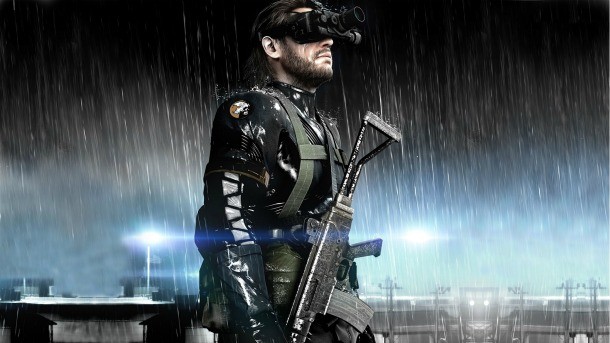
I’m a huge fan of the Metal Gear Solid series, and The Phantom Pain is at the top of the list of titles I’m looking forward to this year, but that doesn’t mean I think it’s perfect. Despite my love for the games and their quirks, I still think there’s plenty of room to improve. Here are some changes that could keep the series on the straight and narrow for years to come.
Warning: There are tons of spoilers for the Metal Gear Solid series in this feature; proceed at your own risk.
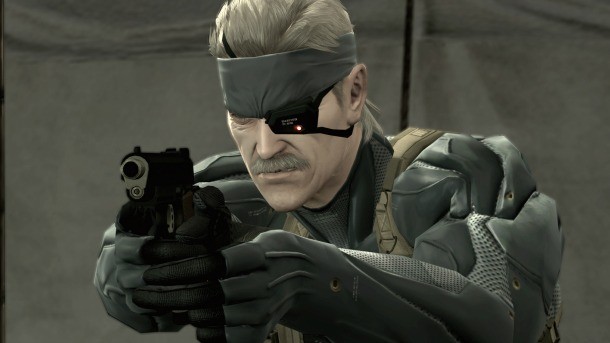
Move on From All the Old Snakes
The story of the man we know as Solid Snake concluded in 2008, along with the tales of his crazy twins and predecessor – although bits of Big Boss’ past are still coming together. With The Phantom Pain set to fill in the gaps between Big Boss’ early days as a mercenary and his first confrontation with Solid Snake, almost every gap in the series’ history is filled. That leaves only the question of what to do next.
One option is to continue Raiden’s story, following everyone’s least favorite Snake (though he was technically only a Snake for about fifteen minutes) through the times directly after The Patriots. However, something about Metal Gear Rising: Revengeance’s story feels toothless without the weight of the rest of Solid Snake and company; at times Revengeance feels like a TV show that got renewed past its planned end and is just going through the motions.
The best solution to the problem of having wrapped up the story is moving the series far enough ahead that the events of Metal Gear Solid fill the same role as the lore surrounding The Boss. Kojima and company have already experimented with the idea of “the mother of special-forces” starring in her own game, which would be cool, but a fresh start ultimately needs to happen to pull the series out of its cannibalistic retcon rut.
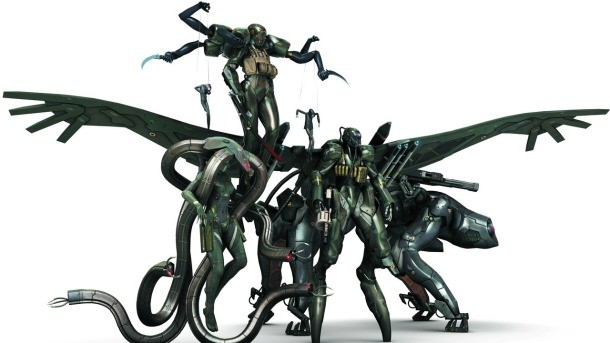
Tone Down the Creepy Stuff
The Metal Gear Solid series has always had its fair share of sleazy content. Some of that content was funny back in the ‘90s – specifically the stuff being used to poke fun at the supposedly untouchable super-spy – but it just feels juvenile and unnecessary by modern standards.
There’s no reason for EVA to unzip her coveralls all the way down to her waist the second she gets off her motorcycle in Snake Eater. Similarly, it doesn’t make any sense for Sniper Wolf to leave her chest exposed while operating in Alaska. It’s also never been explained why Peace Walker needed a shot of Paz in her underwear during the opening sequence.
Guns of the Patriots and Ground Zeroes take the cake, though. Gratuitous shots of the Beauty and the Beast unit’s skin-tight suits marred Solid Snake’s final mission. Meanwhile, Ground Zeroes positions Paz as little more than an object to inflict pain on to establish the malevolence of Skull Face.
If it weren’t for the inclusion of The Boss as a central figure, it would be easy to write the series off as a dated extension of the era it was created in. However, The Boss shows that the Metal Gear team is fully capable of ignoring the molds they’ve cast for their characters. Unlike many others, she is well written and well-handled in her time as Snake Eater’s main antagonist.
Kojima and company have proven without a doubt they can do better than purposeless, creepy nonsense. Yet for some reason, they choose not to. It’s okay to write characters that lack depth to fill space, like a standard soldier in a military shooter, but it’s a waste to not also do more when you’re capable of it. Kojima Productions is capable of more, and it’s about time they started doing it.
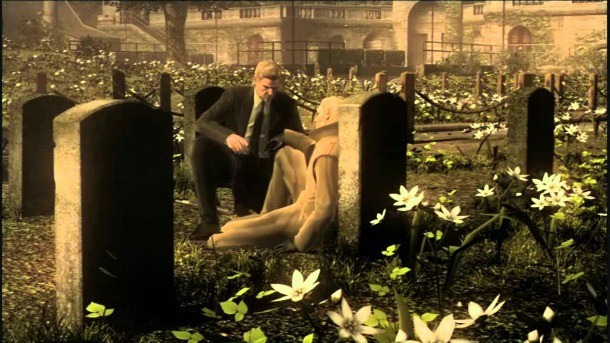
Cut Down the Cutscenes
Metal Gear Solid might have more exposition per hour than any other action series in history. Cutscenes depicting the exploits of Snake, Big Boss, and Raiden can run the length of short TV shows. The problem is, most of that exposition doesn’t need to happen, or could happen somewhere else.
The series’ most vaunted character shouldn’t have to mop up plot holes at the end of Guns of The Patriots. Raiden and Rosemary shouldn’t have to painstakingly remind each other of their own past. Otacon shouldn’t have to explain things in grueling detail to a professional soldier for whom a much simpler explanation would suffice.
It’s time to tuck all of the extra info into a codex in the form of audio logs, codec conversations, or some sort of journal. Players shouldn’t have to worry about missing a vital piece of information in an onslaught of detritus, or have story dumps distract them from the games’ main storyline. I love the Metal Gear backstory and the twists and turns of each game, but even I spaced out a bit at the end of Metal Gear Solid 4.
Cut the dead air, put the background info somewhere that better facilitates accessing it, and let me get back to being a sneaky super-spy.
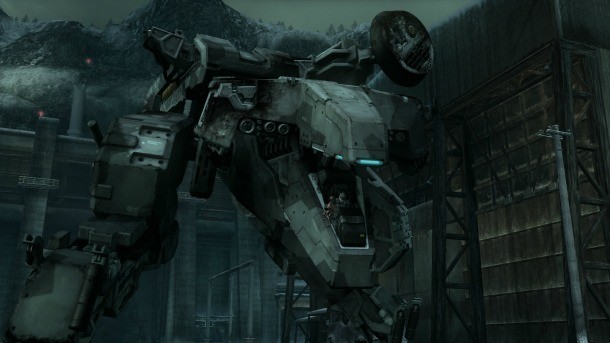
Vary the Gameplay More
From a gameplay standpoint, the Metal Gear Solid series has always operated based on a simple concept: Snake is a man with a gun and exceptional skill, and it’s him versus everyone else. While the idea of pitting the player against the world works well in context, there are times when sneaking around areas becomes a bit tedious. It certainly couldn’t hurt to start breaking things up a little more often.
Guns of The Patriots is one of the best games in the series at offering up different things for players to do, while also not introducing anything that feels out of place. In the game Snake finds himself piloting the iconic Metal Gear REX, riding an APC out of a battle zone while unloading on Gekkos, and flashing back to the first few minutes of the original Metal Gear Solid, among other things. Though they are a heaping helping of spectacle for spectacle’s sake, they breathe life into the over-the-top nature of the conflict being portrayed.
Konami hasn’t shown off enough of The Phantom pain to tell whether similar elements will make a return on the same scale, but open worlds don’t often mesh with tightly scripted action sequences. Those big (sometimes slightly goofy) set pieces are important moving forward, though. You can only ask someone to shoot, tranquilize, or choke out a guard so many times before it gets old – and most fans have been doing that for almost 20 years.
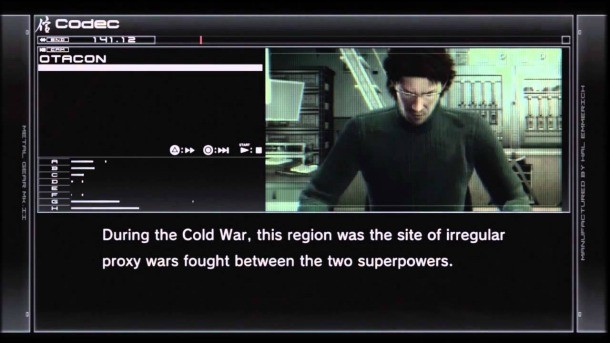
Bring Back the Codec Chatter
One of the best pieces of the early games in the Metal Gear Solid franchise was the codec conversations. Though their length was definitely an issue they were full of funny side content, and adept at breathing life into the series’ off-screen characters. While it would be nice to see Kojima Productions continue to stay away from them as unskippable segments, the series’ optional calls are still valuable as side content.
I hope they’ll make a triumphant return in The Phantom Pain, but neither Guns of The Patriots or Peace Walker – with which The Phantom Pain shares undeniable similarities – feature the iconic element in the way past games have.
Peace Walker relegates them to a menu that’s only vaguely explained, so players generally listen to several at once (and without context) rather than taking advantage of specific in-game situations. Guns of The Patriots scrapped the entire system, leaving just a couple useless frequencies behind.
It’s hard to experience the levity that makes the series so much fun without the constantly accessible codec. While silly things do happen in Metal Gear Solid cutscenes, they tend to stay more grounded. It also doesn’t seem right to position them as audio logs, because it neglects the random moments like Big Boss and Sigint discussing the carboard box in Snake Eater. The conversations also allow the games’ main characters to interact with people who aren’t around to appear in cutscenes, or tease events coming later in the game.
An expansion of the codec concept would be a great way to reign in the overlong cinematics. Instead of forcing players to sit and read along, the codec content could easily just be played over top of gameplay and scripted sequences. With the new open world of The Phantom Pain, digging into codec conversations explaining character motivations or justification for things like The Patriots would pair well with exploring.
Creating a database within the codec would also be a nice touch, allowing players access to an organized set of information about what’s going on if they haven’t played for a while. With such a complex storyline, having a bunch of info at players’ fingertips would be a welcome addition.
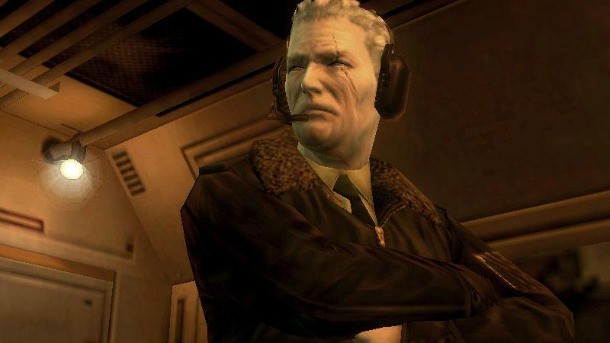
Everyone Doesn’t Have to Know Everyone Else
The Metal Gear Solid series loves to connect dots that don’t need to be connected. Major Zero in particular, later called Cipher or just Zero, has his hands in everything. He was part of the mission that defined Big Boss, one of the founding members of The Patriots, responsible for the creation of three of the series main characters, and the driving force behind the plots of the Metal Gear timeline since Snake Eater. Zero isn’t alone either.
Big Boss traces to the core of most of the series’ conflicts. Donald Anderson from the original Metal Gear Solid is actually Sigint from Snake Eater. Johnny Sasaki was derived from a recurring guard character in Metal Gear Solid and Sons of Liberty, and his grandfather was created to fill the same role in Snake Eater. Huey Emmerich, Otacon’s father, was given direct involvement in Peace Walker and the history of Metal Gear, despite never having even having been named prior to the game. The list of connected characters reads like a game of six degrees of Kevin Bacon.
There’s no reason that everyone in the series needs to know everyone, or for every enemy to be directly tied back to one of the series’ main antagonists. Most of Snake Eater revolves around stuff that never gets seen or even explained in much detail, and it still works fine.
It seems like Metal Gear Solid can’t resist dipping back into the well and pulling out an old character in some form. Kojima Productions needs to get into the habit of letting fresh faces fill vital roles – or at the very least throw monkey wrenches into the equation – instead of repurposing their own fiction to tie things together.
What would you like to see from the Metal Gear franchise in the years to come?

Get the Game Informer Print Edition!
Explore your favorite games in premium print format, delivered to your door.
- 10 issues per year
- Only $4.80 per issue
- Full digital magazine archive access
- Since 1991









